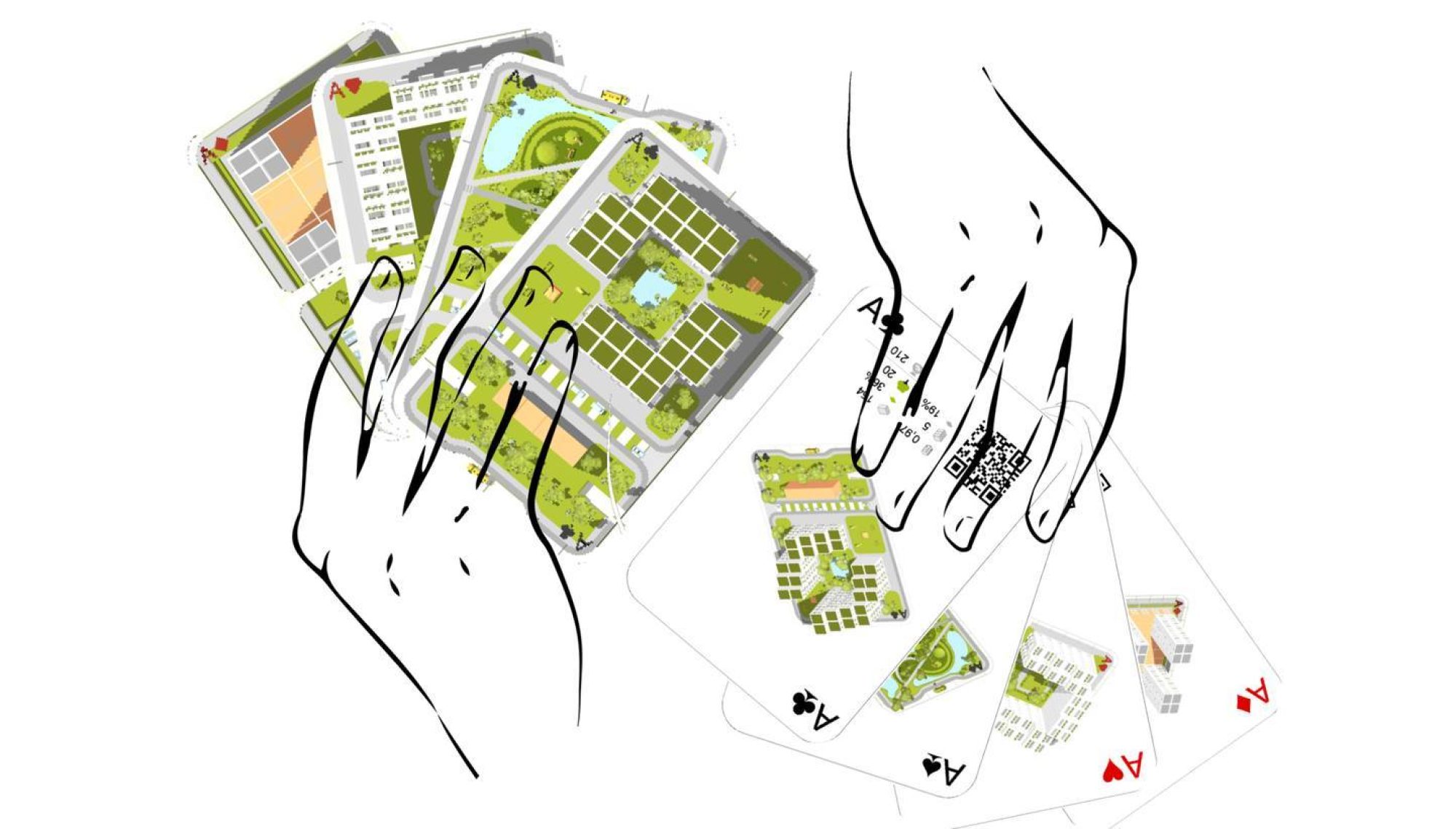
We would like to invite you together with @Kato Science Corner to an event entitled: „HOUSING ESTATE GAME, Card Game, Board Game” during which a short lecture will be presented and workshops will be held on architecture, spatial planning and urban design based on the card game „Game of the Village” – www.grawosiedle.polsl.pl .Place: Kato Science Corner, Młyńska 2, Katowice
Deadline: 11.04.2024, 17.00 hours
Duration: ca 2hWorkshops open to allWe expect 25 people): please sign up on FB- I will take part and or at: tomasz.bradecki@polsl.pl , tel. 793090078
Organisers: Silesian Urban Metropolis, Faculty of Architecture, Silesian University of Technology, Urbanmodel Scientific AssociationThe workshop is led by Tomasz Bradecki, Ph. Tomasz Bradecki, Professor of Architecture, Silesian University of Technology, together with members of the Urbanmodel Research Group.
Description of the game:The aim of the settlement game is to draw attention to the problem of intensification of housing development and shaping the space of settlements. It uses a theoretical approach that draws on didactic and popularisation activities.
The game is universal for different age groups and can be used as a classic card game. It has 2 decks, i.e. 2D and 3D – this makes it easier to imagine what the different buildings look like. The cards refer to 3D models that can be used to create virtual settlements. As in computer games, rules and different levels of play have been prepared. The 3D deck offers beginners a game of points, the number of which depends on the value of urban indicators. The 2D deck allows you to lay out settlement plans and can be used for board-like games; no board is needed, no specialised rules are needed. The 3D deck can be useful for advanced players. 3D models prepared by the authors can be downloaded, and it is possible to create 3D settlements based on them, just like when playing with blocks.
All the elements of the settlement game designed by the authors are intended to show the role and importance of urban indicators and parameters that determine the character of a development.
Cards 2 to 10 represent residential development layouts in a cumulative manner – the higher the card value, the higher the development intensity (number of dwellings per hectare). The lowest values are represented as single-family, low- and medium-intensity multi-family buildings.Instructions of the workshop:1.Introduction of the presenter: Urban planning indicators and parameters in residential development.10 min2.Introduction to the OSIEDLE game and the system of cards 10 min
Demonstration of cards, presentation of cards in augmented reality3.Division into groups (2 or 3 or 4 groups) approx. 5 min4. GAMES IN THE ENVIRONMENT at beginner level – indicator war, solitaire, – games aimed at familiarising the participants with the possibilities of the cards and evaluating the use of the cards – 20 min to 30 min5.GAMES IN THE ENVIRONMENT at intermediate level – games aimed at understanding the role of the indicators and consciously shaping the space of the housing estate with the realisation of the task of CREATING e.g. an ECO-HOUSE, or a developer housing estate, a resident housing estate, a housing estate of a specific intensity 20 min to 40 min
Optional (if time remains and participants agree)
6.HOUSING ESTATE GAME – intermediate and advanced level – using cards and boards (playing time is min. 50 minutes) – players use special boards and invest in order to develop the plots more effectively.
Information about the game: www.grawosiedle.polsl.pl/https://delibra.bg.polsl.pl/Content/76315/download/
Translated with DeepL.com (free version)
